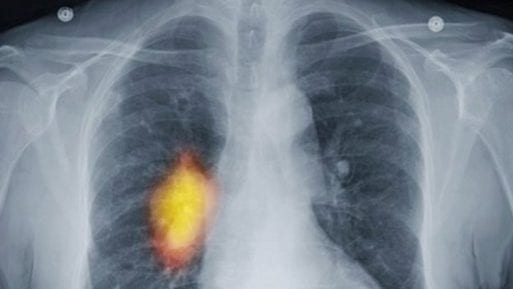
Lung cancer remains the No. 1 cause of cancer deaths in the U.S., but a new study shows early palliative care may improve survival rates
Credit: bbc.com
Lung cancer is the leading cause of cancer death among both men and women. The American Cancer Society estimates that there will be 228,820 new cases of lung cancer diagnosed this year alone. And while the number of diagnoses and deaths have been decreasing thanks to people quitting smoking and medical advancements, treatment and long-term recovery can be complex. Past research has demonstrated that integrating palliative care into the routine clinical care of patients with lung cancer can relieve pain and protect against complications. However, results regarding the effect of palliative care on survival rates haven’t been well researched. That is, until now.
A study released at the end of 2019 in JAMA Oncology showed a strong correlation between palliative care and survival rates in those with advanced lung cancer, specifically in those who received treatment 31 to 365 days after diagnosis. Also, the results showed that early palliative care offered in an outpatient setting appeared to have the greatest impact.
Details of the Early Palliative Care Study
The study included more than 23,000 patients in the Veterans Affairs health care system with advanced lung cancer. The timing of palliative treatment was separated into three groups: 0 to 30 days, 31 to 365 days, and more than 365 days following diagnosis.

It’s important to pay attention to the details here. Those who experienced higher survival rates were those who received early palliative care in the 31 to 365 day range. Those who received palliative care beyond the 365-day mark saw no difference. Notably, those who received care before the 30-day mark saw an even worse survival rate than those who received no palliative care. Researchers believe these poor results are because the patients in those groups were “likely dying” and thus any interventions probably wouldn’t improve their outcomes.
The study also showed that receipt of palliative care was associated with a reduced risk of death in an acute care setting. This suggests that those who receive early palliative care are less likely to die in the intensive care unit or undergo aggressive treatment at the end of life.
One shortcoming of the study was that its subjects were 98 percent male, though the risk of developing lung cancer in one’s lifetime is just about equal regardless of gender. This suggests that the findings may not be applicable in all clinical settings. Despite this, and despite the focus on advanced lung cancer, Donald Sullivan, with the VA Portland Health Care System Center to Improve Veteran Involvement in Care and the Oregon Health and Science University Division of Pulmonary and Critical Care Medicine, who co-authored the study, stated, “I have no reason to believe that these findings could not be generalized to patients with other serious conditions.”
One thing is for certain: The overall benefits and potential cost savings that early palliative care can offer patients and families has been well established. This kind of research will help the public become more informed about their options and, as stated by Sullivan, “will get more clinicians and patients thinking about the importance of palliative care.”

 Early Palliative Care Linked to Higher Survival Rates for Those With Lung Cancer
Early Palliative Care Linked to Higher Survival Rates for Those With Lung Cancer



 How to Comfort A Dying Loved One
How to Comfort A Dying Loved One
 Our Annual Seven Holiday Gifts for Someone Who Is Grieving, 2024 Edition
Our Annual Seven Holiday Gifts for Someone Who Is Grieving, 2024 Edition














